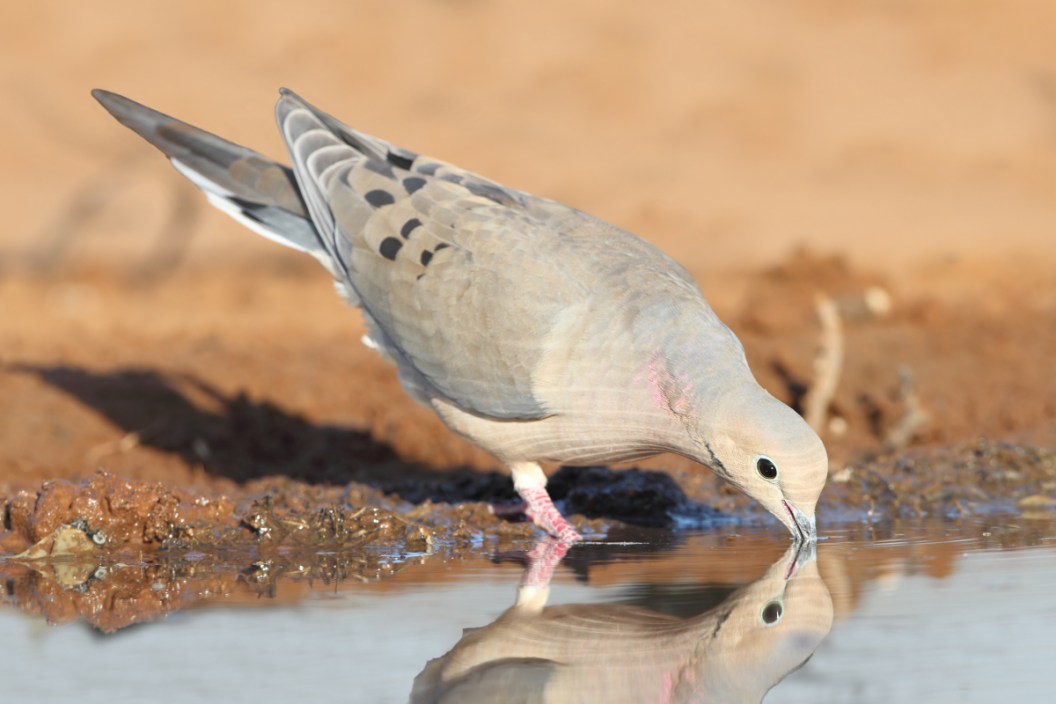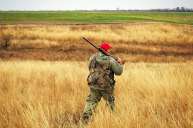Nothing excites Texans quite like the start of dove season.
Across North America, there are some hunting seasons that tired and true traditions. Seasons that every hunter looks forward to participating in all year long. Especially a state as seeped in tradition as Texas, where dove hunting is king through September.
It is not just the locals that get excited either. People travel from near and far to the Lone Star State in hopes of bagging their daily bag limits from the state's robust dove populations. The highly accessible nature of dove hunting also means hunters of all skill levels can easily participate.
Today we will go over everything you need to know about Texas dove hunting. From the hunting zones and dove season dates to the hunting licenses you will need. This is the ultimate guide to Texas dove season.
When is dove hunting season in Texas?
The Texas Parks and Wildlife Department has separated the state into three separate zones that Texas dove hunters need to know before they go. We have included the TPWD's map above for quick and easy reference. The zones are pretty self-explanatory. But TPWD notes that the north zone begins at the International Bridge near Fort Hancock and follows a path northeast along State Highways 10, 20, and 148 across the north half of the state through Abilene, Fort Worth, and finally along Interstate Highway 30 to the state line in Texarkana.
The south zone begins near Del Rio at the International Toll Bridge and follows U.S. Highway 277, Highway 90, State Loop 1604, and Interstate Highway 10. It passes through San Antonio and Houston long the way before ending near Orange Texas on the Louisiana border. The central zone is obvious as it is simply the area between the north and south zones in central Texas.
While these three zones have similar opening days statewide, there are some subtle differences in the end dates. For 2021-2022, the regular seasons fall as follows:
North Zone: September 1 through November 12, 2021, and December 17, 2021, through January 2, 2022.
Central Zone: September 1 through October 31, 2021, and December 17, 2021, through January 14, 2022.
South Zone: September 14 through October 31, 2021, and December 17, 2021, through January 21, 2022.
In addition to those seasons, the South Texas zone has some special white winged dove days for additional hunting opportunities. The dates for those days are September 3-5, 2021, and September 10-12, 2021.
What are the hunting regulations for doves in Texas?
Before we get to the limits, we need to talk about license requirements. All hunters must complete and pass a hunter education course, which can be done online. Hunters under 17 years old must also attend a field day to earn their certificate of completion. After that, you will need a Texas hunting license, which is $25 for residents and $315 for non-residents. Hunters also need a Texas Migratory Game Bird endorsement stamp to hunt doves in the Lone Star State. This endorsement costs $7 for both residents and non-residents.
Finally, you will also need a Harvest Information Program (HIP) endorsement. This is simply an extra federal certification that TPWD and the U.S. Fish and Wildlife Department use to estimate the number of hunters participating in the hunt every year. You may receive a survey about your season after the hunt that biologists compile with the data of other hunters and then use to make decisions regarding the management of the birds. Texas does not charge an additional fee for HIP certification but be prepared to answer some questions about your hunt. You can get all three of these needed documents when you purchase your hunting license. It is very important to get all three because you can get ticketed by the game warden if you do not have one of them.
As far as bag limits go, the north, south and central zones all have a daily bag limit of 15 birds with a daily aggerate of no more than two birds being of the white-tipped variety. The total possession limit is three times the daily bag limit. During the special whitewing dove days in the south zone, the bag limit remains 15 birds, but you are allowed no more than two mourning doves and two whitetips.
The legal shooting hours for dove season in Texas are one-half hour before sunrise to sunset. If you are planning on hunting the south zone's whitewing days, remember that the hours are noon to sunset. You do not want to get a ticket.
There are three variants of dove that are legal to hunt in Texas. The most common is the mourning dove which is found statewide. The whitewing and white-tipped doves are mostly found in south Texas. These birds all fall under the bag limits we discussed earlier. There are two species that Texas has labeled with an "unprotected status" because they are problem birds. These doves have zero bag limits or closed seasons. They include the rock dove, aka: pigeons, which many hunters target at the same time as doves, and the Eurasian collared dove.
Texas dove hunters also need to be careful because there are also three birds that are strictly protected. The first is the band-tailed pigeon. Fortunately, it is easy to identify thanks to a yellow bill and a white band around the back of the neck. The other two are a little trickier. The first is the Inca dove or Mexican dove. Look for the red markings on the underside of the wings, spots on the tail, and an overall brown appearance. The last dove to watch out for is the common ground dove which is distinguished by spots on the wings and a small body.
If you are worried about identifying these doves, we recommend going out with an experienced dove hunter or an outfitter. They will know when to shoot and when to let a bird pass. If you have zero experience hunting doves, it is better to be safe than sorry.
What do you need to hunt doves in Texas?
Other than the licenses we mentioned, there are very few things you need to hunt these birds. While hunting usually has an extremely high learning curve, dove hunting is something you can pick up in a single morning of hunting. In fact, most of you probably already own the equipment required. A good shotgun in 12 or 20-gauge is perfect for doves. The action does not matter too much. Semi-auto, pump, or over-and-under are all solid choices. Try using a modified or skeet choke for the best pattern. Most hunters use either 7, 7 ½ or No. 8 shot. Texas does not allow the use of lead shot for the taking of migratory game birds. Just remember to lead the doves slightly more than you would other game birds. They are small and a bit challenging to hit.
Because Texas is still quite warm in September, you will probably want to dress lightly for the occasion. This is one of the few game animals where you can get away with shorts and a T-shirt while hunting them. Some doves can be wary if pressured. However, you usually do not need a lot of elaborate camo to bag them. Most hunters just plop down a stool or bucket on the edge of a field and wait for the doves to come to them.
The only other thing you may consider are some decoys. Fortunately, dove decoys are usually cheap when compared to other types of game bird. Almost every serious dove hunter keeps at least one spinner decoy in their setup because doves seem to respond extremely well to them.
Where can you hunt doves in Texas?
This is the most challenging part of a dove hunt in the Lone Star state. Private land is king in the Lone Star State. And because they are such a popular bird to pursue, most public land areas are completely overrun with hunters on opening day. The public areas near major cities like San Antonio, Austin, and Dallas are very likely to be full. Try to get as far away from the cities as you can if hunting public land to up your odds of success. Texas Parks and Wildlife have a handy interactive map on their website that can help you find a location.
Some hunters have much better luck pursuing a dove hunting lease. TPWD does work with private landowners to provide short-term leases for hunters who want a little peace and quiet from the crowds. You can also look online for private dove outfitters that usually charge anywhere from $150 to $200 a day for use of their land. A little pricey, but worth it to avoid other hunters. You can sometimes get a better deal if you get a lot of buddies to go in on one together.
Wherever you choose to hunt, remember that agricultural areas are likely going to hold more birds. In the early part of September, the birds are going to congregate on food sources and that is where you will want to be when the season starts. Try to sit in the corners of food sources if you can. They usually act as a type of funnel for birds coming to feed.
The Texas dove season is approaching fast. Fortunately, it is easy to hunt and the meals you can get from these game birds are fantastic. Give it a try this season. You may just have a new hunting tradition!
Products featured on Wide Open Spaces are independently selected by our editors. However, when you buy something through our links, we may earn a commission.
For more outdoor content from Travis Smola, be sure to follow him on Twitter and check out his Geocaching and Outdoors with Travis YouTube channels.
NEXT: THE AXIS DEER AND HOW THEY'RE IMPACTING PARTS OF THE UNITED STATES
WATCH






